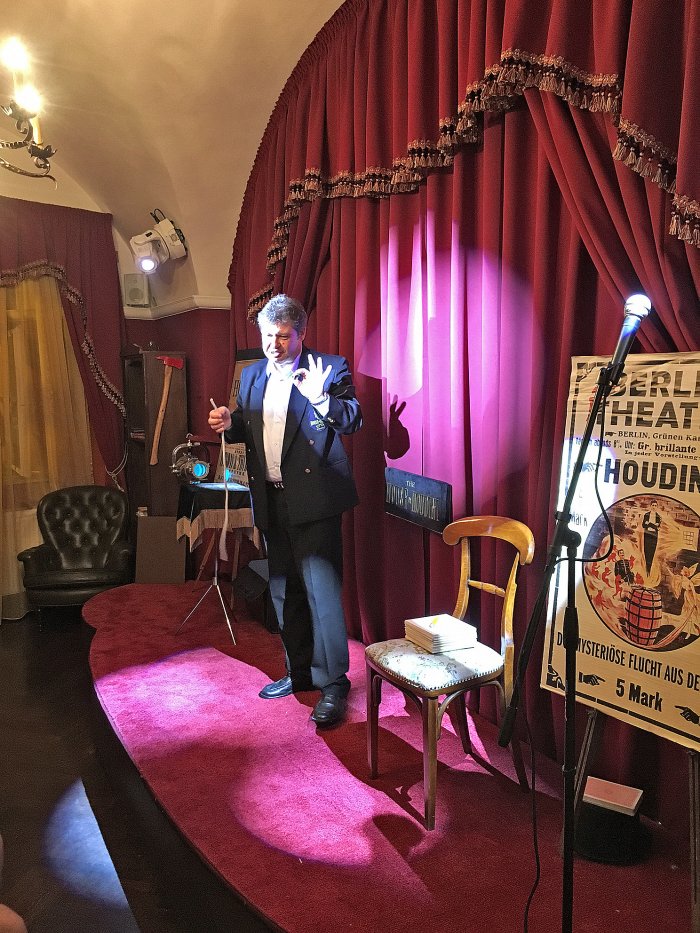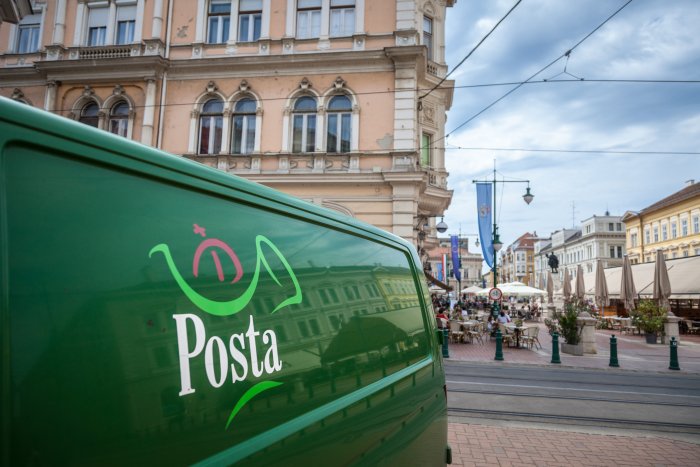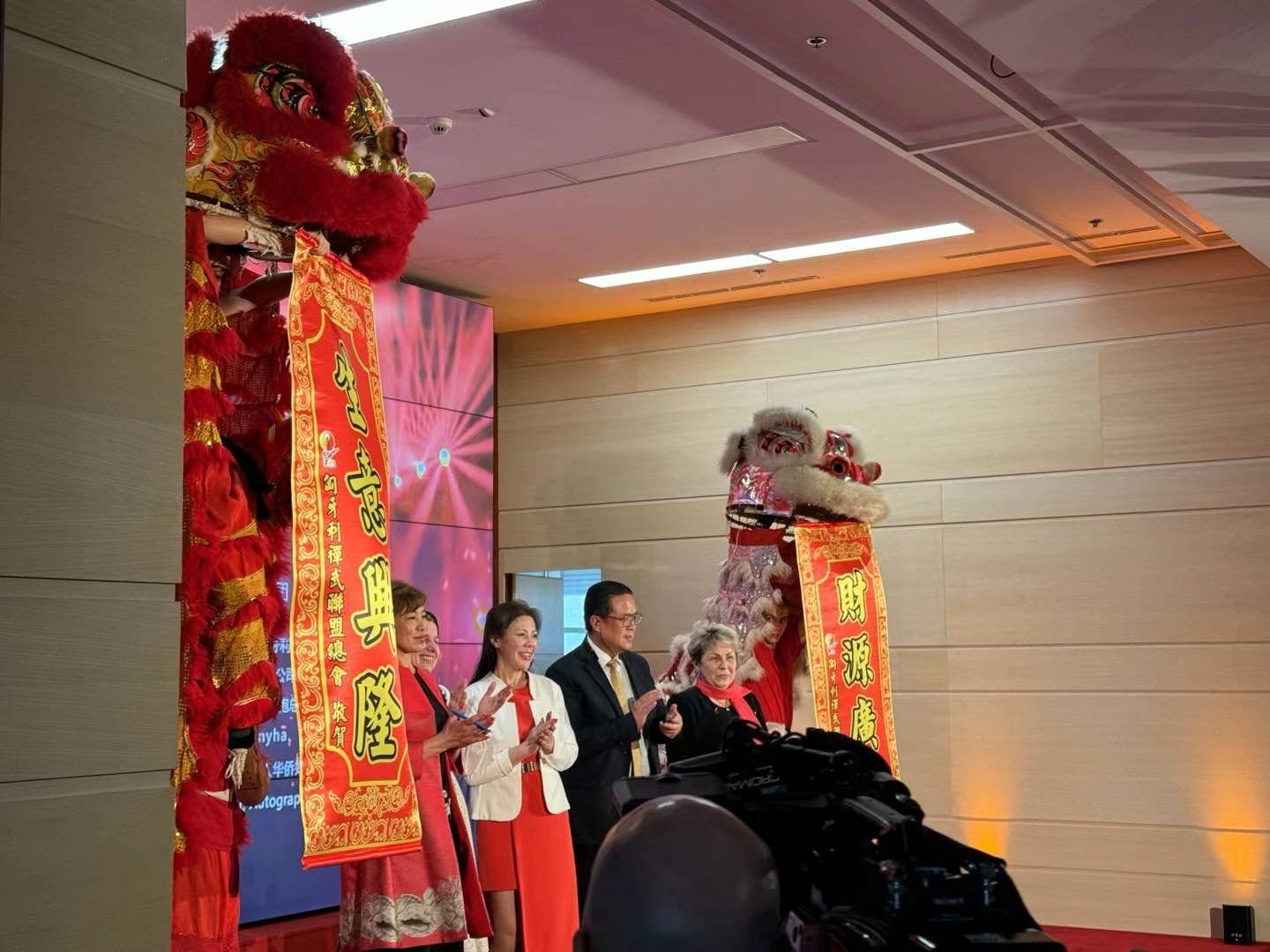Visiting the Buda Shrine to Harry Houdini

It was beginning to get dark in Budapest’s Castle District as we tried to find the House of Houdini at 11 Dísz tér. Everyone we asked directions from told us it was five minutes away from where we were, but still we went round in circles. The irony of trying to find a museum dedicated to celebrating a legendary escapologist that was clearly hiding in plain sight didn’t escape us.
I had no problem wandering the splendidly atmospheric streets of the Castle District. I did notice, though, that my Hungarian partner and her sister were shivering theatrically and casting longing look at the glorious illuminated front of the Hilton Budapest every time we passed.
You wouldn’t have to be a mind reader to realize that my partner and her sister were somewhat disappointed when we finally found the House of Houdini, which claims to house the largest collection of Houdini artefacts in the world. But I was determined to drag them inside.
I was rather disappointed to discover that this wasn’t the actual House of Houdini, as in where he was born. But the short guided tour and magic show that followed were great fun. Even for my partner and her sister.
The House of Houdini was created by an escapologist who had been a technical adviser on a movie about the life of the great man. To enter, our group of adults had to tell the fresh-faced guide, himself a magician, how many cards there are in a deck of cards excluding the jokers. None of us knew.
Once were finally inside, we were shown magic tricks including handcuffs that had belonged to Houdini and a rather shredded straitjacket. Someone had been a hurry to get out of that. My partner was keen to test the “Sawing a woman in half” box but couldn’t work up the nerve to ask the guide if he’d like to demonstrate on her.
As she’s not the tallest of women, I’m glad she didn’t raise her hand.
Hungarian Houdini
Because Houdini took his stage name from French magician Jean Eugéne Robert-Houdun, you could be forgiven for not knowing that he was Hungarian. (No-one is entirely sure where the “Harry” came from.) He was born Erik Weisz somewhere in Pest in 1874 but moved to the United States with his family in 1878. On arrival the family named changed to the German Weiss and Erik became Ehrich. They settled in Appleton, Wisconsin.
After Weisz senior lost his job as a rabbi, the family moved to New York and became dreadfully poor. Aged nine, the future Houdini debuted as a trapeze artist. It’s to the benefit of the world that he didn’t apprentice as a delivery boy.
In the beginning, Houdini didn’t make much of a splash as a magician. His big break came in 1899 when a vaudeville impresario advised him to focus on escapology. Next year he was touring Europe. In London, he escaped from a pair of handcuffs at Scotland Yard and the resulting publicity meant his career really took off.
Houdini went on to escape from a milk can, a “Chinese water torture cell”, a straitjacket suspended high above the ground from a tall building, and a packing case that been lowered into water. He also surfaced after being buried alive.
After having survived several dramatically close shaves, Harry Houdini died from peritonitis secondary to a ruptured appendix aged just 52. His appendix had been ruptured by several blows struck by a university student named Jocelyn Gordon Whitehead while Houdini was in his dressing room backstage at the Princess Theatre, Montreal.
Although I knew the bare facts of Houdini’s death, I wasn’t aware of the backstory which was revealed to us by our guide. I won’t share the secret here. You’ll just have to go to the House of Houdini yourself.
One thing the guide couldn’t explain was why Houdini never owned up to his Hungarian origin. He also claimed this was only discovered in the 1970s, which I find difficult to believe.
Magical Moments
After the guided tour we were ushered into a tiny theater to watch a magic show. The whispering magician, whose name I later found out is László Tóth, manages to combine a hang dog demeanor with a mixture of relief and pop-eyed delight when he pulls off a trick.
Tóth’s tricks were the usual parlor magician stuff. He made a girl’s ring disappear and reappear on a key chain inside his pocket. One of his routines updated a card trick for the age of technology and involved a card that only appeared in a photograph of the contents of his wallet, but which was otherwise invisible.
Even though the tricks were hardly spellbinding, Tóth’s pleasure in his work was infectious and our party of adults who couldn’t count briefly became smiling children. By the end of his act, my partner and her sister were entranced along with the rest of us.
He told me that he’s been practicing magic since he was 13 and is happy to make his living performing at the House of Houdini. On a good day, he does four or five shows.
After thanking Tóth, we emerged onto a street that was just a little more mysterious than it had been before. We headed off to the Hilton, which my partner and her sister managed to find without any difficulty.
From the Hilton bar, we looked out across what had been the cloisters and courtyard of a 13th century Dominican monastery to where the lights of Pest shimmered and sparkled. Somewhere in the mean streets far beyond the river, Harry Houdini was born humble Erik Weisz. And we’ll never know why he concealed that fact in his lifetime.
Find out more at www.houseofhoudinibudapest.com. Take the hyperbole with a pinch of paprika but, rest assured, it’s really worth a visit.

SUPPORT THE BUDAPEST BUSINESS JOURNAL
Producing journalism that is worthy of the name is a costly business. For 27 years, the publishers, editors and reporters of the Budapest Business Journal have striven to bring you business news that works, information that you can trust, that is factual, accurate and presented without fear or favor.
Newspaper organizations across the globe have struggled to find a business model that allows them to continue to excel, without compromising their ability to perform. Most recently, some have experimented with the idea of involving their most important stakeholders, their readers.
We would like to offer that same opportunity to our readers. We would like to invite you to help us deliver the quality business journalism you require. Hit our Support the BBJ button and you can choose the how much and how often you send us your contributions.





.png)

